Name SS Persia Yard number 295 Launched 13 August 1900 Draft 7.44 m | Port of registry London Type Cargo-passenger ship Length 152 m Builder Caird & Company | |
Owner Peninsular & Oriental Steam Navigation Company Fate Torpedoed and sunk, 30 December 1915 | ||
SS Persia was a P&O passenger liner, built in 1900 by Caird & Company, Inverclyde, Greenock, Scotland. It was torpedoed and sunk without warning on 30 December 1915, by German U-boat U-38.
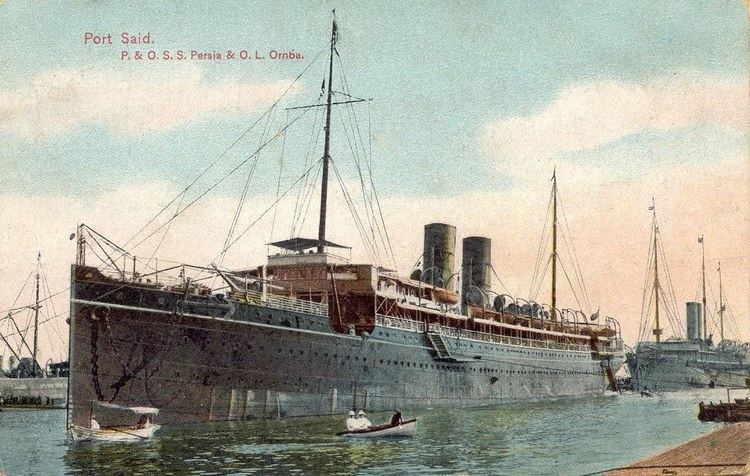
History
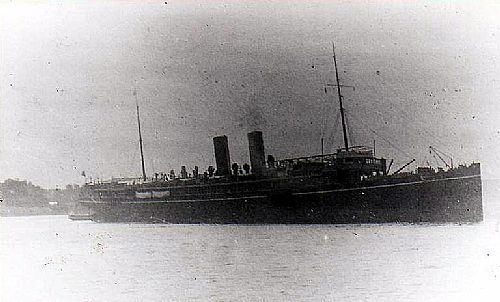
499 feet 8 inches (152.30 m) long, with a beam of 53 feet 3 inches (16.23 m), draft of 24.5 feet (7.5 m) and a size of 7,974 gross register tons (GRT), Persia carried triple expansion steam engines capable of driving the ship at 18 knots (33 km/h; 21 mph).
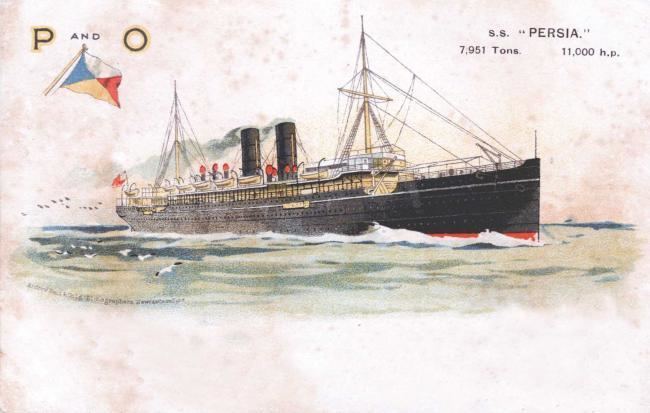
Persia was sunk off Crete, while the passengers were having lunch, on 30 December 1915, by German World War I U-Boat ace Max Valentiner (commanding SM U-38). Persia sank in five to ten minutes, killing 343 of the 519 aboard. One reason for the large number of casualties, was that only four of the lifeboats were successfully launched. The sinking was highly controversial, since it broke naval international law, or the "Cruiser Rules", which stated that merchant ships could be stopped and searched for contraband, but could only be sunk if the passengers and crew were put in a place of safety (for which, lifeboats on the open sea were not sufficient). Instead, the U-Boat fired a torpedo with no warning, and made no provision for any survivors. This action took place under Germany’s policy of unrestricted submarine warfare, but broke the Imperial German Navy’s own restriction on attacking passenger liners, the Arabic pledge.
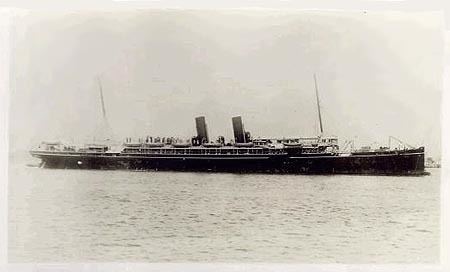
At the time of sinking, Persia was carrying a large quantity of gold and jewels belonging to the Maharaja Jagatjit Singh, though he himself had disembarked at Marseilles. Among the passengers to survive were Walter E. Smith, a British Member of Parliament, Colonel Charles Clive Bigham, son of Lord Mersey, and John Douglas-Scott-Montagu, 2nd Baron Montagu of Beaulieu. His secretary (and mistress) Eleanor Thornton, who was the model for the Rolls-Royce "Spirit of Ecstasy" mascot by Charles Sykes, died. Also among the dead were Robert N. McNeely, American Consul at Aden and a former North Carolina state senator from Union County, Robert Vane Russell, and American missionary Rev. Homer Russell Salisbury.
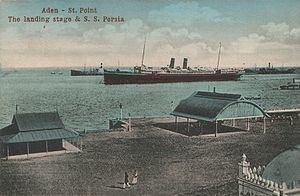
The survivors on the four lifeboats were picked up during the second night after the sinking by the minesweeper HMS Mallow. Only 15 of the women on board survived, among them British actress Ann Codrington (The Rossiter Case), who was pregnant with her daughter, Patricia Hilliard. Ann lost her mother, Mrs. Helen Codrington.
Sixty-seven crewmen from the Portuguese colony of Goa perished. Most of them were stewards.
The sinking was front page news on many British newspapers, including the Daily Mirror and the Daily Sketch.
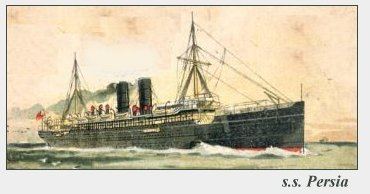
The wreck of Persia was located off Crete in 2003 at a depth of 10,000 feet (3,000 m), and an attempt was made to salvage the treasure located in the bullion room. The salvage attempt met with limited success, retrieving artifacts and portions of the ship, and some jewels from the bullion room. Some of the gems have since been made into commemorative jewelery.
